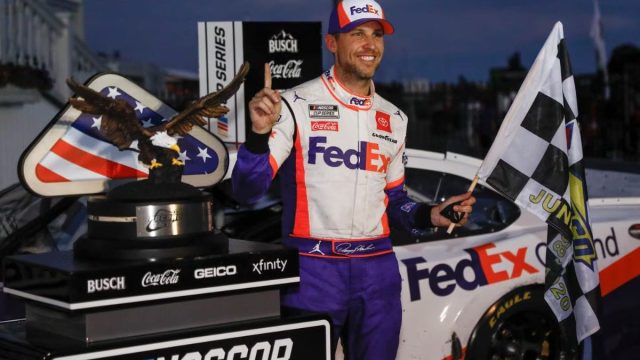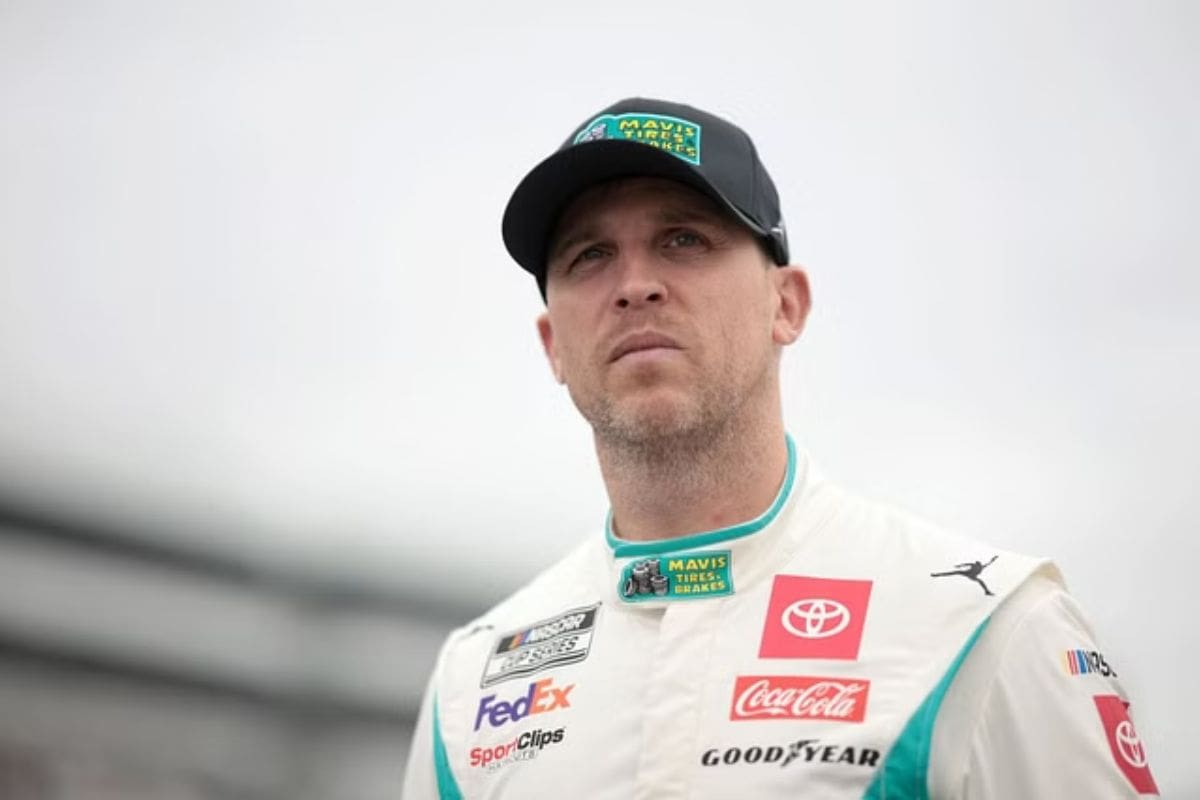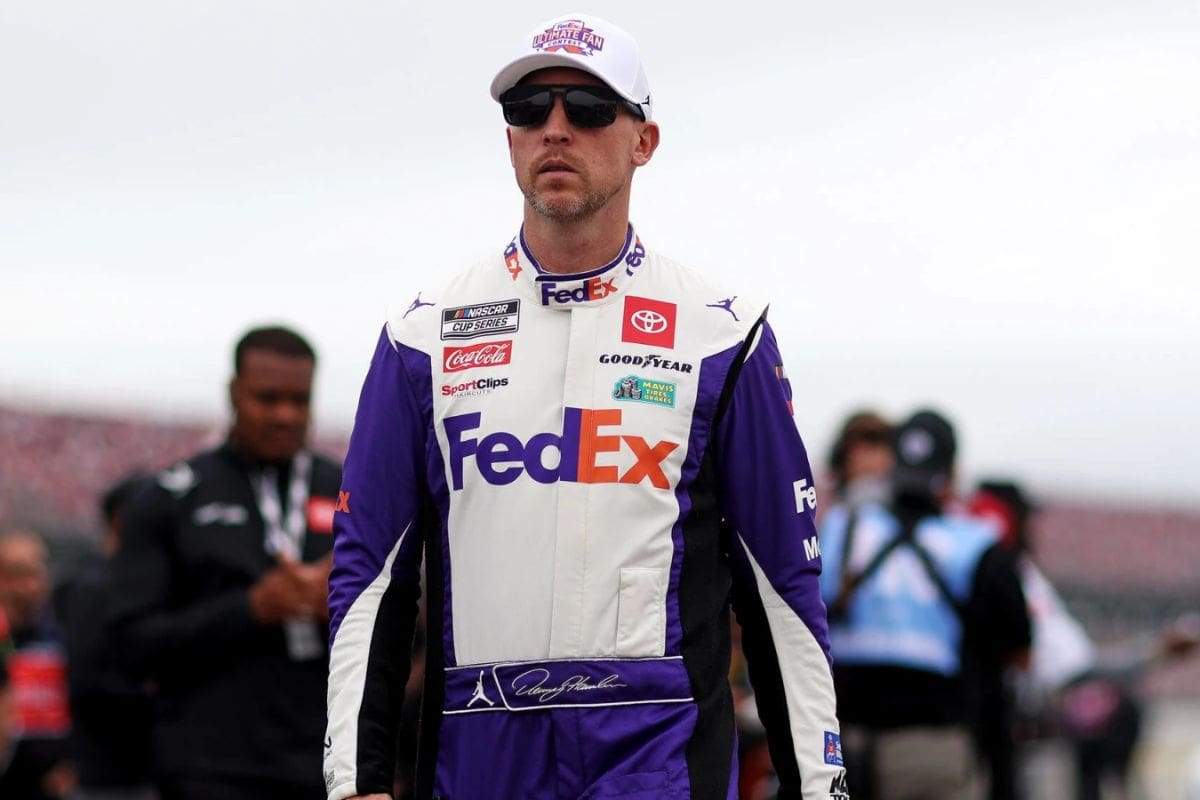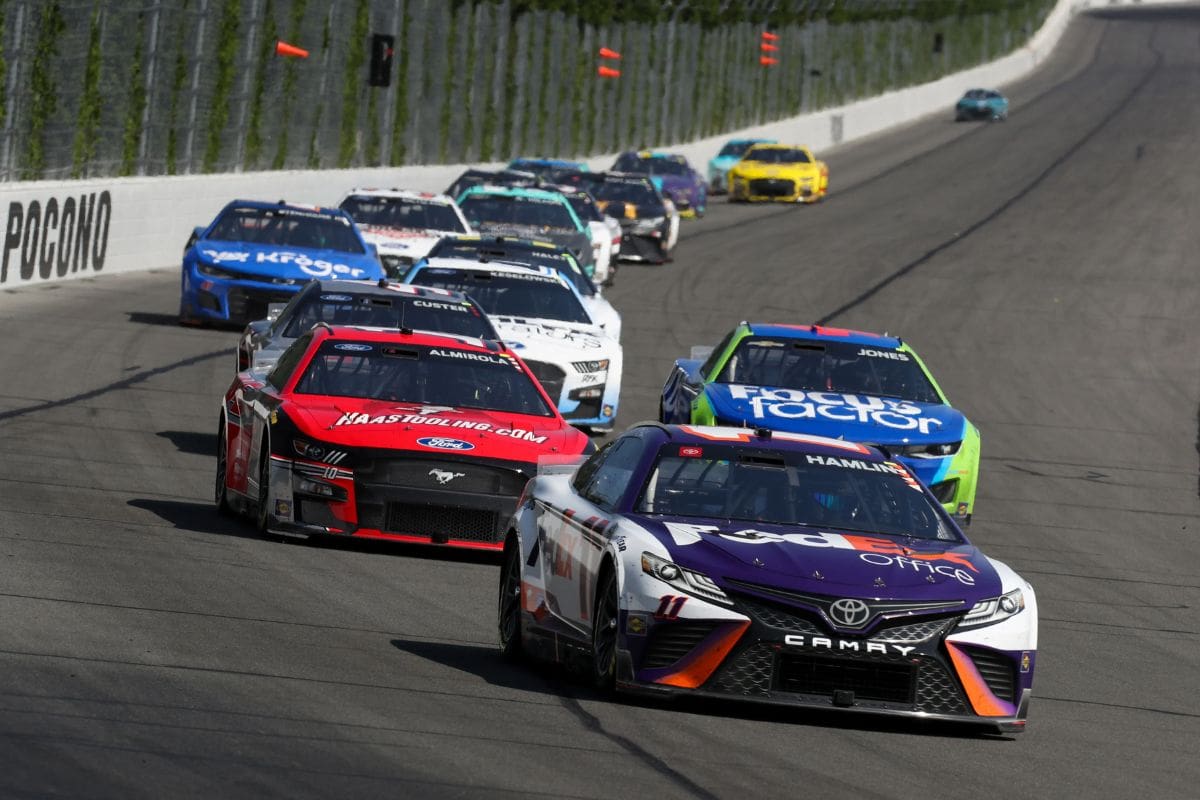Denny Hamlin Discloses Costs of Running a NASCAR Car: Denny Hamlin‘s disclosure of the staggering $18 million annual cost to operate a NASCAR Cup Series car has exposed the substantial financial burdens inherent in the sport. This figure encompasses a multitude of expenses, including personnel salaries, car maintenance, and operational overheads, underscoring the noteworthy investment required to sustain a competitive team. Sponsorships are vital in offsetting these costs, facilitating technological advancements and team development. Hamlin’s transparency not only illuminates the intricate financial landscape of NASCAR but also raises questions about the sustainability and future viability of team operations amidst evolving economic pressures.
Key Highlights
- Denny Hamlin states an annual cost of $18 million to run a Cup Series NASCAR team.
- Key expenses include personnel salaries, car maintenance, travel logistics, and operational overheads.
- Sponsorships are crucial for offsetting these significant operational costs.
- Financial stability is influenced by the scalability of expenses with team expansions and charter acquisitions.
- Simplified sponsorship rights and equitable revenue sharing from media deals are advocated to support team finances.
Denny Hamlin’s Concerns and Financial Insights
Addressing the financial complexities of NASCAR team ownership, Denny Hamlin has highlighted the substantial annual cost of approximately $18 million necessary to run a single Cup Series team. This figure encapsulates a myriad of expenses including, but not limited to, personnel salaries, car maintenance and parts, travel logistics, and operational overheads.
Hamlin, serving as both a driver for Joe Gibbs Racing and a co-owner of 23XI Racing alongside NBA legend Michael Jordan, offers a unique perspective on these fiscal demands. Hamlin’s insights are particularly enlightening given his dual roles within the sport. As someone deeply entrenched in the day-to-day operations and tactical planning of a NASCAR team, he is well-versed in the intricate financial landscape.
The $18 million figure is not just a theoretical estimate but a reflection of real-world costs that teams must manage to remain competitive. This includes securing sponsorships, which are crucial in offsetting these substantial expenses. Sponsorship deals often provide the lifeline that enables teams to invest in cutting-edge technology, skilled personnel, and other essential resources.
Hamlin’s experience with 23XI Racing, which currently operates two charters, highlights the scalability of these expenses. As the team contemplates expanding with a potential fourth charter by 2025, the financial burden is expected to grow proportionally. This ambition to expand signifies both a confidence in the team’s operational capabilities and a recognition of the escalating investment required to sustain and grow within the competitive environment of NASCAR.
Opposition to NASCAR’s Charter Proposal
Voicing strong disapproval, Denny Hamlin has taken a firm stance against NASCAR’s current charter proposal, which he argues undermines the stability and future growth of teams like 23XI Racing. Hamlin’s opposition centers on key provisions within the proposal, which include allowing the France family to purchase Cup charters. This, he contends, could lead to a monopolistic grip on the sport, further complicating the competitive landscape for independent teams.
“We’re trying to make it more simple when we’re trying to go to NASCAR and say let’s lock arms, let’s do this together, we’ll give you these rights to go shop for us that way when you go get an official sponsor, it goes to all of us, same as what the NBA the NFL MLB does, It’s not like that.” – Hamlin
A crucial point of contention is the absence of permanent charters for the upcoming season. This lack creates uncertainty for teams planning long-term investments and expansions. For 23XI Racing, co-owned by Hamlin, this complicates long-range planning and financial stability, making it challenging to attract and retain sponsors, and secure driver contracts.
The recent $7.7 billion media rights deal compounds these concerns. The alignment of the new media deal with the proposed charter duration suggests a potential shift in power dynamics within NASCAR, where media influence could surpass team autonomy. Hamlin believes this could stifle innovation and competitiveness, pivotal elements for the sport’s evolution.
Key issues raised by Hamlin include:
- Absence of Permanent Charters: The proposal does not offer permanent charters, creating uncertainty for team planning.
- Monopolistic Concerns: Allowing the France family to purchase Cup charters could centralize control within NASCAR.
- Financial Stability: Teams face challenges in securing long-term investments without assured charters.
- Impact of Media Rights Deal: The $7.7 billion deal’s alignment with charter duration may shift power towards media interests.
- Future Growth: The proposed changes could impede the growth and competitiveness of emerging teams like 23XI Racing.
Hamlin’s Advocacy for Simplified Sponsorship Rights
Apart from his criticism of NASCAR’s charter proposal, Denny Hamlin has been vocal about the need for streamlined sponsorship rights, advocating for a system more in line with other major sports leagues to alleviate the financial burdens on teams. Hamlin’s discussion on the Kenny Conversation podcast, hosted by Kenny Wallace, laid bare his frustrations with NASCAR’s existing sponsorship framework, which he believes worsens the already considerable costs of maintaining competitive operations.
Hamlin highlighted the financial strain imposed by the current sponsorship model, where teams must constantly seek and manage multiple sponsors to cover operational expenses, which can reach up to $18 million annually. This fragmented approach often requires significant administrative resources, diverting attention from the core focus of racing. By drawing parallels to other major sports leagues, Hamlin demonstrated how a more consolidated and streamlined sponsorship system could provide a more stable financial foundation for teams.
In other sports, league-wide sponsorship deals often ensure that teams receive a portion of the total revenue, reducing the need for individual sponsorship negotiations and allowing teams to concentrate on performance. Hamlin advocates for a similar model within NASCAR, where centralized sponsorship agreements could alleviate the financial burden on teams and offer more predictable revenue streams. This would not only simplify the sponsorship landscape but also promote a more sustainable environment for team operations.
“We have our own sponsors that NASCAR will send their own sponsorship proposal, to try to get them to spend money with them, but we need them the most because of our business model. It costs us $18 million a year to put a car on the racetrack. We’ve asked NASCAR to just cover our cost, nothing more just cover our cost to go put on this show for you, and the answer has been repeatedly no.” – hamlin
Hamlin’s advocacy is rooted in the belief that streamlined sponsorship rights could propel the sport forward, making it more accessible and financially viable for teams. His call for reform reflects a broader desire within the racing community for structural changes that can improve the long-term health and competitiveness of the sport.
Challenges in Negotiating with NASCAR
Negotiating with NASCAR has proven to be a formidable challenge for Denny Hamlin and other team owners, who have encountered substantial resistance in their efforts to secure a charter deal that addresses the financial sustainability of their teams. Hamlin, alongside his peers, has emphasized the necessity of crafting agreements that alleviate the financial strain, especially considering the ongoing evolutions in media rights and sponsorship landscapes.
“No negotiation has ever come easy, no one says ‘That’s what you want? Okay no problem, we’ll go ahead and back the Brinks truck up and we’ll just drop the money off to you’. It doesn’t work that way. Somebody has to feel pain for somebody to budge or move and I just think that at this point NASCAR does not feel threatened by the teams whatsoever.”- hamlin
The core of the negotiation difficulties lies in the dichotomy between NASCAR’s traditional business models and the modern financial realities faced by teams. NASCAR’s resistance to accommodating team requests highlights a notable gap in aligning the interests of stakeholders.
Hamlin’s advocacy points to several critical areas that need attention:
- Financial Transparency: Teams demand more transparency from NASCAR regarding revenue distribution, which is pivotal for planning and sustainability.
- Revenue Sharing: Equitable sharing of revenue, particularly from media rights, is essential to guarantee teams can cover operational costs.
- Sponsorship Flexibility: Simplified sponsorship rights and fewer restrictions can help teams attract and retain sponsors more effectively.
- Cost Management: Addressing the escalating costs of running a NASCAR team, including vehicle development and maintenance, is significant.
- Long-term Contracts: Teams seek long-term stability through extended contract terms which would provide a more predictable financial landscape.
The resolution of these challenges is not just about survival but about promoting a thriving, competitive environment for all stakeholders involved.
Future Implications for 23XI Racing
As the discussions with NASCAR continue to unfold, the future of 23XI Racing hinges on obtaining an extra charter, a crucial element in their expansion plans for the 2025 season. The resolution of this matter is not simply a procedural formality but a cornerstone in the strategic growth envisioned by co-owners Denny Hamlin and Michael Jordan. Their ambition to field another car emphasizes their dedication to scaling operations and enhancing competitive depth.
Without the security of a permanent charter, Hamlin and Jordan may need to reassess their expansion strategy, potentially putting their long-term goals at risk. A charter guarantees not only a spot on the starting grid but also secures a share of revenue distributions, which are essential for supporting the $18 million annual cost of operating each car.
Furthermore, the outcome of these negotiations carries broader implications for the sport. The stability of NASCAR’s competitive ecosystem relies heavily on the 15 charter-holding teams, whose financial viability is interconnected with the charter system. Any disturbance in this delicate balance could ripple through the entire racing community, impacting sponsorship agreements, team investments, and fan engagement.
As the dialogue between NASCAR and the charter-holding teams progresses, the stakes for 23XI Racing—and the sport as a whole—remain exceptionally high, making the outcome of these negotiations a crucial moment in the future direction of NASCAR.
News in Brief: Denny Hamlin Discloses Costs of Running a NASCAR Car
Denny Hamlin’s disclosure of the $18 million annual expenditure needed to operate a NASCAR Cup Series team offers vital insight into the financial complexities inherent in the sport.
The dependence on sponsorships to offset these substantial costs is emphasized, revealing important challenges in negotiation dynamics with NASCAR.
Hamlin’s support for streamlined sponsorship rights and opposition to the Charter Proposal highlight ongoing tactical debates.
These financial insights and advocacy efforts will greatly impact the future direction of 23XI Racing and the broader NASCAR scenery.
ALSO READ: Denny Hamlin Hides Toyota’s Pocono Mishap: “I Never Lose…”




